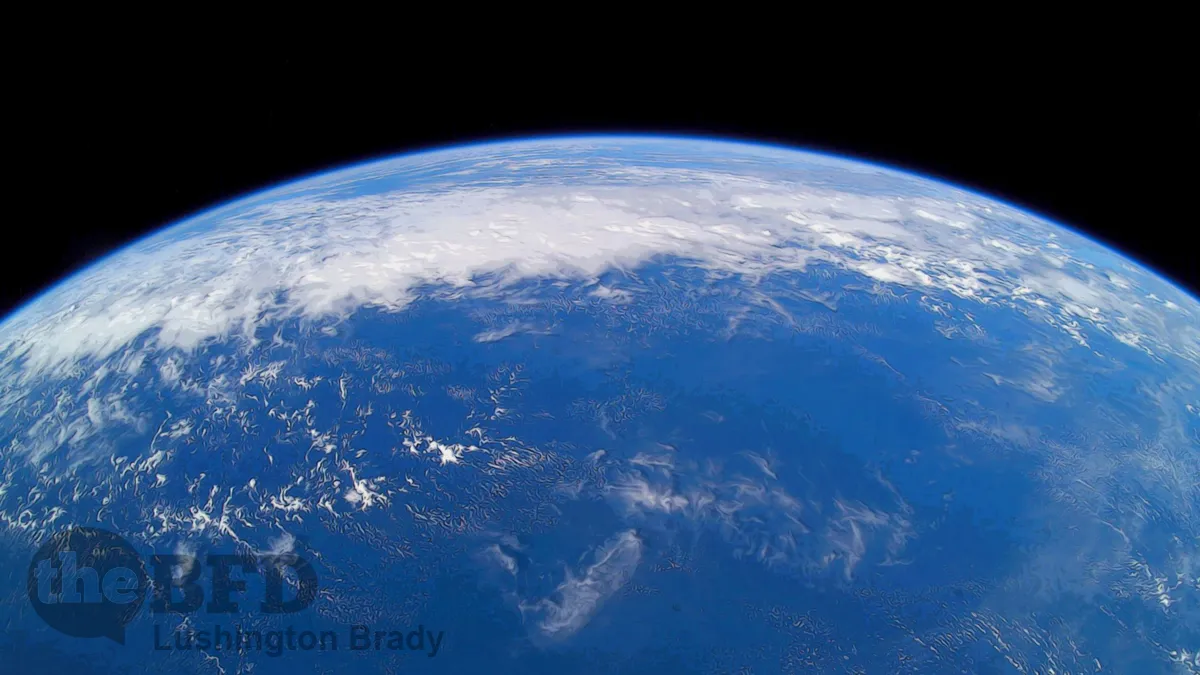Table of Contents
Deep history is endlessly fascinating. Especially as science opens clearer and clearer views of the world-as-it-(probably)-was, not just millions, but billions of years ago. The Ancient Earth Globe, for instance, is an interactive globe that lets you track just where any particular point on today’s Earth was in the past, up to 750 million years ago (my current residence, for instance, would have been perched on the edge of a deep ocean trench, well north of the equator).
One thing that’s particularly noticeable, studying such deep time, is just how long it took for life to spread across the dry land. Widespread life on the land, rather than in the seas, is quite a latecomer.
Could that be at least partly because there was just so much more sea to go round?
Evidence is mounting that some 3 billion to 4 billion years ago, the planet’s oceans held nearly twice as much water—enough to submerge today’s continents above the peak of Mount Everest. The flood could have primed the engine of plate tectonics and made it more difficult for life to start on land.
So, where did all that water go? It is widely believed that, deep below the Earth’s surface, there’s an ocean down thar. If so, why did so much water suddenly go underground?
Rocks in today’s mantle, the thick layer of rock beneath the crust, are thought to sequester an ocean’s worth of water or more in their mineral structures. But early in Earth’s history, the mantle, warmed by radioactivity, was four times hotter. Recent work using hydraulic presses has shown that many minerals would be unable to hold as much hydrogen and oxygen at mantle temperatures and pressures.
So, the water would have had to go elsewhere — the most likely place being the surface.
Two minerals found deep in the mantle store much of its water today: wadsleyite and ringwoodite, high-pressure variants of the volcanic mineral olivine. Rocks rich in those minerals make up 7% of the planet’s mass, and although only 2% of their weight is water today, “a little bit adds up to a lot,” says Steven Jacobsen, an experimental mineralogist at Northwestern University.
Experiments involving heating and squeezing the rocks — mimicking conditions in the ancient Mantle — show that they would have held less water. The minerals would also have become more abundant as the Earth cooled, soaking up even more water.
The experiments aren’t alone in suggesting a water-bound planet. “There’s pretty clear geological evidence,” too, says Benjamin Johnson, a geochemist at Iowa State University. Titanium concentrations in 4-billion-year-old zircon crystals from Western Australia suggest they formed underwater. And some of the oldest known rocks on Earth, 3-billion-year-old formations in Australia and Greenland, are pillow basalts, bulbous rocks that only form as magma cools underwater.
The ancient water world may also have kicked off plate tectonics, the force which is still shaping the world. But it also complicates the story of the origin of life.
The evidence for larger oceans challenges scenarios for how life began on Earth, says Thomas Carell, a biochemist at Ludwig Maximilian University of Munich. Some researchers believe it began at nutrient-rich hydrothermal vents in the ocean, whereas others favor shallow ponds on dry land, which would have frequently evaporated, creating a concentrated bath of chemicals.
A larger ocean exacerbates the biggest strike against the underwater scenario: that the ocean itself would have diluted any nascent biomolecules to insignificance. But by drowning most land, it also complicates the thin pond scenario. Carell, a pond advocate, says in light of the new paper, he is now considering a different birthplace for life: sheltered, watery pockets within oceanic rocks that broke the surface in volcanic seamounts. “Maybe we had little caves in which it all happened,” he says.
The ancient water world is also a reminder of how conditional Earth’s evolution is. The planet was likely parched until water-rich asteroids bombarded it shortly after its birth. If the asteroids had deposited twice as much water or the present day mantle had less appetite for water, then the continents, so essential for the planet’s life and climate, would never have emerged. “It’s a very delicate system, the Earth,” Dong says. “Too much water, or too little, and it wouldn’t work.”
Science
Which should serve as a caution against breathless assertions that exo-planets must make alien life “common”. Knowing just how unlikely life on Earth really was, is a sobering reminder that we may well be alone in the universe, after all.









